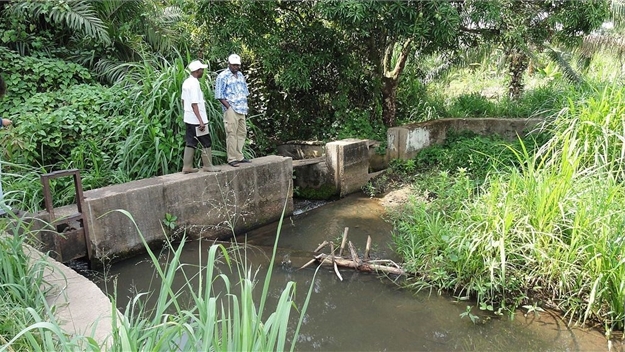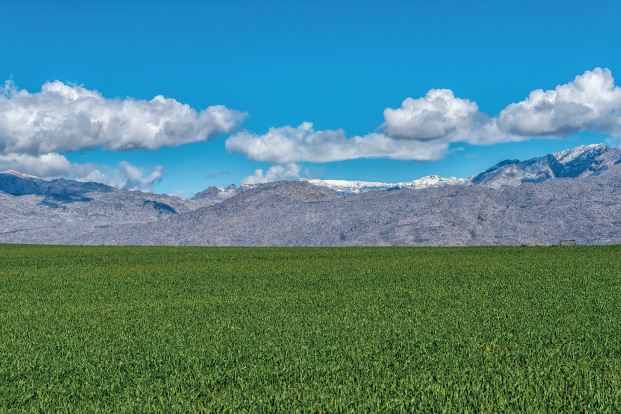How Africa can up its game on water management for agriculture

Delays in South Africa’s wheat tariff publication not helpful
August 22, 2018
South African wheat imports under threat
August 29, 2018
Global agriculture is facing unprecedented challenges. It’s estimated that the world’s population will reach 9.1 billion by 2050 with an ever expanding middle class. Current food production levels will have to be increased by 70% to meet future nutrition requirements.
At the same time, the challenges posed by climate change, water, nutrients and energy are converging.
About 12 million hectares of land becomes degraded each year. Droughts and floods are becoming more frequent and larger. For a host of reasons Africa is at the eye of this storm. Some reasons include the fact that southern Africa has already lost 25% of its soil fertility. And some countries on the continent have some of the highest population growth rates globally.
All of these issues must be tackled. And good water management is among the most crucial factors if Africa is to navigate an uncertain future. Water is essential for agriculture. African countries must, as a matter of urgency, develop coherent and strategic policies around water, land and agriculture.
There is work underway, including my own research and projects being run in South Africa and Australia, that might hold lessons for African countries which want to manage their water better.
The initiatives include investing in irrigation infrastructure, the smart use of technology in water management such as tools to predict and manage the flow of water, as well as mobile apps for farmers.
Investment
Irrigated agriculture is much more productive than rain fed agriculture. That’s why both land and water management must be considered within the question of achieving sustainable and productive agriculture.
In North America’s highly productive arid prairie regions, such as the Prairie provinces of Canada (Alberta, Saskatchewan and Manitoba) and the prairie regions of the US, governments and farmers have invested a lot of capital into groundwater and surface water extraction, as well as irrigation infrastructure.
That has allowed the development of increasingly intensive and productive agriculture. Similar investments into irrigation infrastructure are needed in Africa to boost agricultural productivity. Some examples of fairly complex and extensive irrigation schemes do already exist in Africa. One is the transfer of water from the Gariep Dam to the Fish and Sundays rivers in the Eastern Cape province, which supports intensive citrus farming. Although the ecological sustainability of this example is questionable, it does show that Africa has the capacity to develop irrigation schemes.
Such highly productive agricultural regions will be essential for ensuring future food security, both nationally and internationally. Regions in Africa with high potential for intensive, yet sustainable agriculture through irrigation will need to be identified and developed.
Technology
Technology is also playing an increasingly important role in farming, irrigation and water management.
Modelling tools such as hydrological and water management models have emerged as an essential component of water management. My colleagues and I at the Integrated Modelling Program for Canada are developing tools that can be used to predict and manage the water flow and water quality of Canada’s large river basins. Similar initiatives are needed in other countries. The models developed, along with knowledge gained by our project, can help guide water management in other regions.
Other technological improvements include the development of smart plants that are more drought tolerant thanks to genetic modification and genome editing. Some plants can also be engineered to use more efficient photosynthetic pathways that fully use the sun’s available energy. This development holds promise for the hot climates of Africa.
Irrigation management is now using remote sensing data. Much of these data are freely available and cover the entire planet. For instance, remote sensing is used to pinpoint areas of wet and dry zones in cultivated fields. This allows for variable irrigation management and remote sensing estimates of crop water requirements. Australia’s IrriSAT, which uses the Google Earth Engine, is one example of this approach.
South African technology is using remote sensing to help farmers in the Western Cape province save water.
Mobile apps are currently being piloted in Rwanda to help farmers. These will provide information on weather, rainfall and soil humidity to allow better farm management and productivity, as well as information on markets.
These are positive, but small, steps. It’s clear that the African continent has a lot of catching up to do if it’s to tackle its water management issues.
The way forward
African governments need to pursue collaborations with international institutions interested in working with the continent. For example, the Prairie Farm Rehabilitation Administration has shown interest in working with African governments. The organisation has developed expertise in managing drought and land degradation since it was established in the 1930s.
And established institutions in Africa such as the Water Research Commission and the Agricultural Research Council should be strengthened and new institutions created. This would encourage more sharing of knowledge throughout Africa.
In addition, knowledge of best agricultural practices developed elsewhere should be assessed and adapted for African conditions. Importantly, efforts should be made to reduce the red tape that currently prevents the application of existing technology.
Sourced: Bizcommunity



